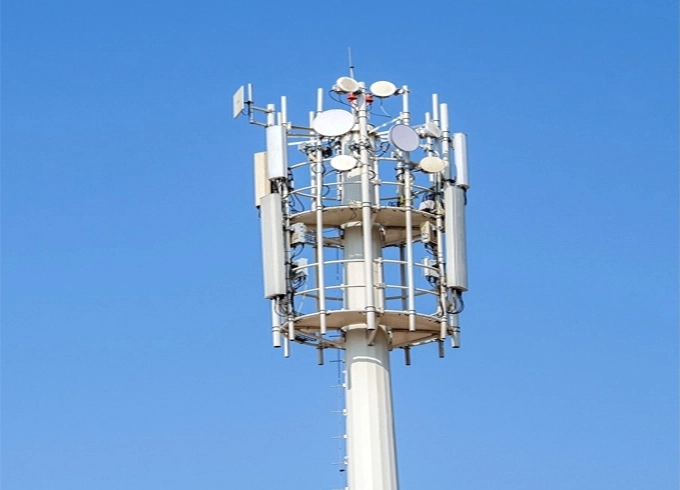Junjiang CCTV camera pole is produced in accordance with national standards and industry standards. It passes related inspections in aspects such as materials, dimensions and structure, load-bearing capacity, and durability. Through its monitoring and guiding functions, it plays a key role in enhancing road traffic safety, orderliness, and convenience, protecting people's daily lives and production activities. Besides, we offer various steel towers, cell tower lightning protection, metal fitting and so on at competitive price. Contact us now!
| Height | 5000mm~6800mm |
| Thickness of the wall | 4mm~14mm |
| Arm length | 1000mm~16000mm |
| Material | GB Q235 |
| Base flange thickness | ≥14mm |
The design parameters of the pole structure by steel tower manufacturers are set to resist earthquakes of magnitude 6 and winds of level 8.Post-galvanizing passivation treatment, with good adhesion of the plastic coating, and a thickness of ≥65μm.The plastic coating meets ASTM D3359-83 standards.
The roundness standard of the pole is ≤1.0mm.The surface of the pole is smooth and consistent, with no horizontal weld seams.The pole is sealed and capped to prevent water vapor from entering, with reliable internal water leakage prevention measures.
Vertical deviation is ≤1.0%.
Proper grounding of a CCTV camera stand pole is essential for safety and equipment protection. Start by driving a grounding rod into the earth near the pole. Connect a grounding wire from the rod to the pole using a grounding clamp. Ensure the wire is securely fastened and free of corrosion. Next, connect the grounding wire to the camera's grounding terminal. Verify all connections are tight and weatherproof. Regularly inspect the grounding system for wear and tear. Proper grounding helps prevent electrical surges and enhances the overall reliability of your CCTV system.
Mounting Bracket Installation: Secure the mounting bracket to the pole at the desired height using appropriate bolts and tools, ensuring it is level and stable.
Camera Attachment: Attach the camera to the mounting bracket, making sure it is firmly secured. Adjust the angle for optimal coverage of the surveillance area.
Wiring and Connections: Run the power and data cables from the camera to the control unit, ensuring all connections are tight and weatherproof to prevent damage.
Testing and Calibration: Power on the camera and test its functionality. Adjust settings and angles as needed to ensure clear and comprehensive surveillance coverage.
1. Cleaning
Turn off the power and disconnect the cable, gently wipe the surface of the device, and regularly check whether there are any obstacles around the device.
2. Calibration
According to the device guide, adjust the device position and camera direction appropriately, check the cable, and ensure that the connection is tight.
3. Update software
Check the device guide, back up important data to prevent data loss, close other programs and ensure sufficient power.
4. Check power and device status
Check whether the power cord and plug are working properly, the device panel to ensure that the status indicator is normal, and the device operating temperature.
5. Regular maintenance
Regularly replace batteries and bulbs, check the device running time and power, and regularly clean up debris and dust inside the device.

